- europages
- >
- COMPANIES - SUPPLIERS - SERVICE PROVIDERS
- >
- sweeteners
Results for
Sweeteners - Import export
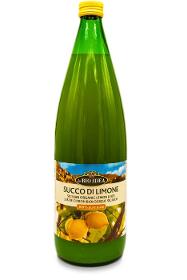
VEHGRO B.V
Germany
"Lemon juice Organic Lemon juice is made from 100% organically grown lemons from the lemon tree (citrus limonum). The lemon originates from Asia, but is nowadays common around the Mediterranean and America. After harvesting the lemon, the juice is squeezed out of the lemon. Our lemon juice comes from Italy where it is cooled and bottled after harvesting. Lemon juice is delicious in smoothies, yoghurts and juices. Lemon juice is also often used as a cleaning agent and can be used for various health purposes. Organic lemon juice in glass 1 litre bottles."
Request for a quote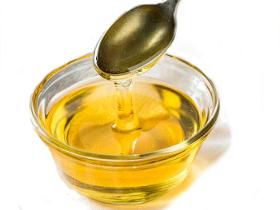
VEHGRO B.V
Germany
"The sweet Mexican Agave syrup comes from the blue-grey Agave Tequilana plant from Mexico. Production of light Agevesiroop Agave syrup is made from the juice in the core (piña) of the agave plant. This juice is heated and concentrated into a syrup. Depending on the degree of heating and concentration, this results in a light to dark amber syrup. Agave syrup Light applications Agave syrups are used as a sugar substitute, as a honey substitute (by vegans) and in various cereal bars as a binder. The light-colored agave syrup has a mild and almost neutral taste and is therefore often used in delicate-tasting dishes and drinks. Healthy properties of agave syrup Agave syrup is high in fructose, which has a low glycemic index. This means that it is processed slowly by your body. So consuming agave syrup does not cause your blood sugar to fluctuate so quickly. However, consuming too much fructose is not so healthy, so use in moderation."
Request for a quote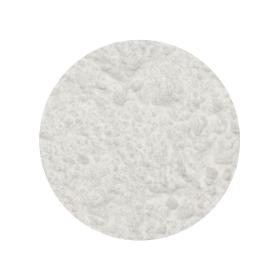
VEHGRO B.V
Germany
"D-glucose Glucose is a naturally occurring chemical compound. This glucose powder is also called D-glucose. D-glucose is also called dextrose. D-glucose is a monosaccharide (simple sugar), a subcategory of carbohydrates. It is an important source of energy. Glucose is made by plants and most algae through photosynthesis (conversion of light into carbohydrates). Dextrose Equivalent (DE) The DE number of the glucose says something about the binding and sweetening power of the glucose and depends on the degree to which hydrolysis is applied. Starch is converted into Glucose by hydrolysis. On a scale of 0 - 100, 0 is pure starch and 100 is pure glucose. The lower the number, the higher the binding power of the product. The higher the number, the higher the sweetening power. Use Glucose can be absorbed directly from the small intestine by the blood. When it circulates in blood, the glucose is absorbed into various tissues. This provides energy in yo…"
Request for a quote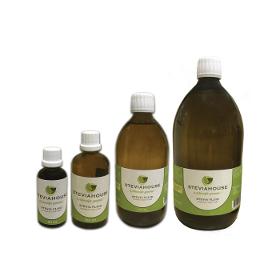
VEHGRO B.V
Germany
Stevia is a natural sweetener and sugar with an enormous sweetening power.
Request for a quote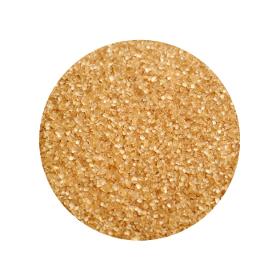
VEHGRO B.V
Germany
"Cane sugar Cane sugar is produced by boiling the juice of the sugar cane until a solid substance remains. This is also called crystallisation. After that, unevenness is sieved out and cane sugar remains. During the process, a small part of molasses is added, which explains the beige, cream colour. This organic raw cane sugar has a slightly malty pleasant sweetness. It can be used in all sorts of ways for which normal sugar is also used."
Request for a quote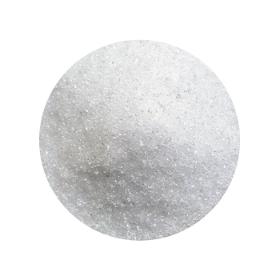
VEHGRO B.V
Germany
"What is Xylitol (Birch sugar)? Xylitol is found as a natural sugar alcohol in many vegetables, fruits and the bark of different trees. Our birch sugar is made exclusively from birch and beech wood from Scandinavia. The Xylitol is extracted from the wood sugar (xylose) in a very complex way. Finely chopped wood is mixed with water. The wood-water mixture is then purified and filtered until all other substances are completely separated from the xylitol. Birch sugar is suitable for diabetics Birch sugar has slightly less sweetening power as the familiar refined (white) table sugar but affects the blood sugar only slightly. This sugar is very suitable for diabetics, the glycemic value is only 7. Beer Sugar Benefits Xylitol has a moisturizing effect on the skin and can increase the amount of hyaluronic acid in the skin. Xylitol is a natural alternative to sugar. Xylitol can be found in almost every toothpaste, and it is often found in chewing gum fo…"
Request for a quote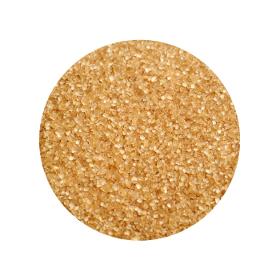
VEHGRO B.V
Germany
"Process and Origin This raw cane sugar is a 100% natural sugar from Colombia. Cane sugar is made from sugar cane. The juice of this sugar cane is boiled down, crystallised, ground into the sugar and sieved. Raw cane sugar misses a step in the production process, because it is not refined. There are, in addition to this brown/gold cane sugar, other different types; white cane sugar and dark brown cane sugar. The colour depends on the amount of added molasses. In the Middle Ages, cane sugar belonged to the expensive and rare spices. The raw sugar was transported to Western Europe in the form of sugar loaves and there purified in sugar bakeries. Use Cane sugar is often used as a replacement for beet sugar. It is delicious in various dishes and drinks."
Request for a quote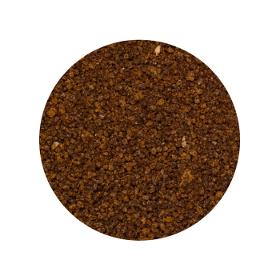
VEHGRO B.V
Germany
"What is Arenga Palm Sugar? Arenga Palm Sugar is made from the nectar of the sugar palm (Arenga Pinnata). The organic arenga nectar is sieved and evaporated until the arenga has crystallised into sugar. Arenga Palm Sugar is less sweet than ordinary granulated sugar. Arenga Palm Sugar healthy Arenga Palm Sugar contains several healthy substances. It contains various minerals, vitamins, proteins and amino acids. There are also many antioxidants in it. It is better than normal sugar, because of its lower glychemical index (30-35)."
Request for a quote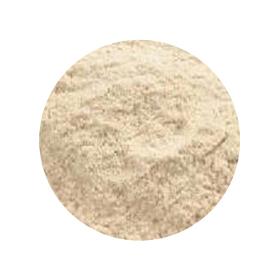
VEHGRO B.V
Germany
"D-glucose Glucose is a naturally occurring chemical compound. This glucose powder is also called D-glucose. D-glucose is also called dextrose. D-glucose is a monosaccharide (simple sugar), a subcategory of carbohydrates. It is an important source of energy. Glucose is made by plants and most algae through photosynthesis (conversion of light into carbohydrates). Dextrose Equivalent (DE) The DE number of the glucose says something about the binding and sweetening power of the glucose and depends on the degree to which hydrolysis is applied. Starch is converted into Glucose by hydrolysis. On a scale of 0 - 100, 0 is pure starch and 100 is pure glucose. The lower the number, the higher the binding power of the product. The higher the number, the higher the sweetening power. Use Glucose powder DE 29 is dehydrated glucose syrup. It prevents recrystallization of sugar in candy. It also gives elasticity to a product and keeps sweet preparations such as…"
Request for a quote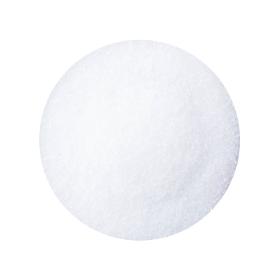
VEHGRO B.V
Germany
"Origin and History Erythritol Sprinkling Sugar Erythritol is a natural sweetener found in some fruits (including watermelon, grape and pear) and mushrooms. Erythritol is the only natural polyol and is produced by fermentation of glucose with natural enzymes. Production Process, Harvest and Processing Erythritol After fermentation, the erythritol is dried, filtered and purified. After this process, it is white granules resembling sugar. Erythritol is suitable as a substitute for sugar. Healthy product properties and applications Erythritol is suitable as a substitute for sugar. Erythritol is quickly absorbed into the blood, with peak levels in less than two hours; most of an oral dose (80-90%) is excreted unchanged in the urine within 24 hours. Erythritol has no effect on blood sugar or insulin levels and can therefore be an effective sugar replacement for diabetics."
Request for a quote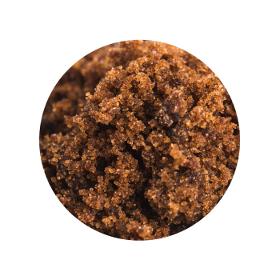
VEHGRO B.V
Germany
"Muscovado Muscovado is a cane sugar from the island of Mauritius and is also known as Barbados sugar. The climate of the small island in the Indian Ocean is ideal for growing sugar cane. Unlike most brown sugars, which are made by adding molasses to refined white sugar, Muscovado sugar takes on the flavor and color of its source, sugar cane juice. Because of this, Muscovado sugar still contains the natural minerals and vitamins from the sugar cane. It has a molasses content of 10-15%, so in its consistency it is very soft, lumpy and moist. Taste and use The taste of Muscovado sugar is soft from toffee and malt and gives this type of sugar its unique character. Muscovado sugar is more resistant to high temperatures than other sugars making it perfect for use in hot dishes or baking. It gives meals and hot drinks a particularly savoury sweetness and is ideal for sweetening marinades, dark sauces, chutneys and all kinds of hot drinks."
Request for a quote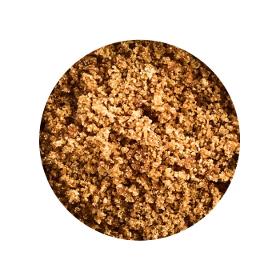
VEHGRO B.V
Germany
"Origin Panela Sugar Panela sugar is originally from Central and South America. The pleasant sweetness, with its bright caramel and light freshness, is complemented by a subtle licorice taste. Production process Panela sugar Panela sugar is extracted from pure juice from the sugar cane, so that a number of valuable ingredients such as vitamins and minerals are not lost. Healthy product properties and applications Panela is not sophisticated. This means that all vitamins and minerals are still in it. Panela sugar has a golden yellow to caramel brown color. In Colombia, organic panela sugar is mainly used in hot and cold drinks. Depending on the desired sweetness, the right amount is mixed with cold or hot water."
Request for a quote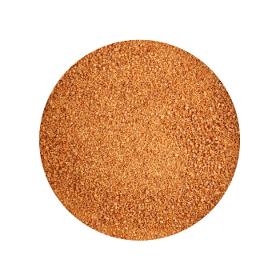
VEHGRO B.V
Germany
"palm sugar The sugar juice is extracted from the blossoms of the Palm trees. The Arenga Palm Tree is highly appreciated for the high quality of its sugar juice. Processing The palms are grown by a cooperative, to which several farmers are affiliated. The palms are grown in an area that was burnt down in the past and has now been turned into a modern sustainable sugar extraction by new growth of palm trees. Using a complex method, the thick juice is processed into Arenga sugar. This sugar is supplied by the Masarang foundation. In addition, the landscaped plantations provide a new habitat for endangered species. Palm sugar resembles brown sugar, but unlike ordinary table sugar and brown sugar, palm sugar contains many more minerals, such as magnesium and potassium. The structure of palm sugar is similar to that of soft sugar and therefore very suitable for baking. Palm sugar has a characteristic caramel taste and is ideal for sweetening food and drinks."
Request for a quote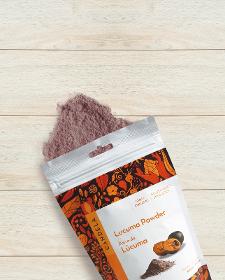
CANDELA BIO-HANDELS GMBH
Germany
The lucuma powder is obtained from drying the whole fruit (seed, pulp and peel) and its subsequent milling making it an integral powder. BENEFITS Lúcuma powder is an extraordinary natural energizer, providing fiber, potassium, vitamin B3 and carotenoids. It gives vitality to carry out daily activities normally, and is rich in niacin (vitamin B3). Thanks to the latter, it stimulates the proper functioning of the nervous system. LÚCUMA POWDER PRODUCT APPLICATIONS This fruit is seen as a healthy alternative sweetener and is excellent for diabetics. It helps to increase the level of hemoglobin in the blood, stimulates the proper functioning of the nervous system and is an extraordinary natural energizer. It is used in confectionery (ice cream, custard, meringue, pudding, custard and marshmallows) and as a flavoring for milkshakes, yogurt shakes and cookies.
Request for a quote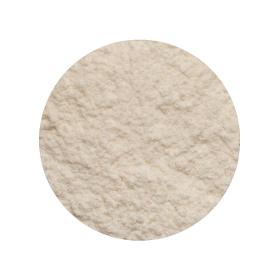
VEHGRO B.V
Germany
"What is Maltodextrin? Maltodextrin is a polysaccharide (carbohydrate) that has the unique ability to bind fats and oils. It is used to improve the texture of food and drinks. Maltodextrin is also used as a powdered dietary supplement by athletes. DE-qualification Maltodextrins are classified according to their Dextrose Equivalent (DE) and can have a DE value between 3 and 20. The higher the DE value, the shorter the glucose chains and thus the sweeter the maltodextrin. Maltodextrins with a DE value up to and including 10 are considered to be non-sweet. Above the DE value of 20 it is so sweet that it may no longer be called maltodextrin. Then it is called glucose syrup. Maltodextrin DE-10 of Tapioca starch This maltodextrin is made from Tapioca starch. The starch is hydrolyzed with natural enzymes (GMO free) and then dried by a spray process. The powder is white, has a neutral taste and can in diluted form improve the viscosity of products."
Request for a quote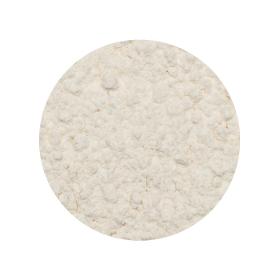
VEHGRO B.V
Germany
"Origin and history Cane sugar Cane sugar is an ancestral cultivated species of cane. It was first cultivated by the Austronesians in maritime Southeast Asia about 5000 years before Christ. Thanks to a prehistoric migration by sea, the Austronesians extended their territories from Madagascar to Hawaii until 1500 BC. And during these migrations, cane sugar came along. Sugar was first made from cane in northern India. From the 8th century onwards, Muslims and Arab traders spread cane sugar around the world. In the Middle Ages, cane sugar was a status symbol of power in Europe and was counted among the rare and expensive spices. How is Cane Sugar (powder) made? Cane sugar can come in various forms. Depending on the amount of Molasses filtered out of the primal product, the colour of cane sugar becomes lighter and lighter. Molasses is a product that is processed in rye bread and licorice, among others. Healthy properties of Cane sugar powder and applicatio…"
Request for a quote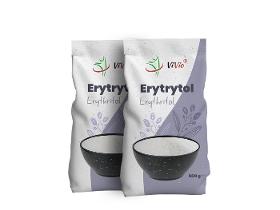
RADZIOWI SP. Z O.O.
Poland
Erythritol is an increasingly well -known and used sweetener. It comes from a group of sugar alcohols - polyoli, has zero caloric content and a glycemic index. It is recommended to all, including people with diabetes or on a low -calorie diet. It looks like ordinary white sugar - crystalline, odorless, similar in taste. In nature, it occurs in flower pollen, fruit (pears, melons, grapes), hat mushrooms, seafood, fermented drinks such as wine, as well sea algae. Erythritol, available in stores, is most often obtained by fermentation of glucose by various yeast species or synthesized by waste glycerin yeast. It is completely safe for use in the kitchen and more. The World Health Organization (WHO) recognized erythritol as a completely safe food addition. You can find it on the labels under the E968 designation. He is considered one of the healthiest sweeteners - it is not metabolized by the human body, man releases him in an unchanged form along with the urine.
Request for a quoteDo you sell or make similar products?
Sign up to europages and have your products listed
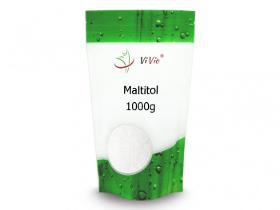
RADZIOWI SP. Z O.O.
Poland
<Span Style = "Font-Weight: 400;"> Maltitol is a sweetener from the group of sugar alcohols called the poliolas from the xylitol and erythrol family. It is classified as sweeteners of natural origin, unlike synthetic sweeteners, such as aspartame. Maltitol occurs naturally in small amounts in some fruits and vegetables, in roasted straw, as well as in chicory leaves. It can also be created in a chemical process, consisting in adding hydrogen to sugar called maltose, found in potato starch, wheat or corn. And it is the corn that is most often used for the production of maltitol in food processing. </span> & nbsp; <span style = "font -weight: 400;"> Maltitol (E965) is a medium-colored sweetener, used as a substitute for sugar for food and sweet drinks , but not only. It is used in the pharmaceutical industry to produce some drugs and skin moisturizing agents due to its hygroscopic properties. Added to chewing gums or sweets, it causes a feeling of pleasant coolness in the mouth.
Request for a quote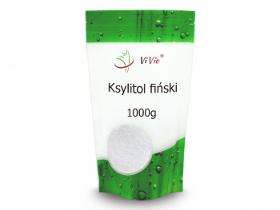
RADZIOWI SP. Z O.O.
Poland
Xylitol is an increasingly popular sweetener that gives dishes sweets and does not increase their caloric content. It is recommended for diabetes and people on a low -calorie diet. Its advantage is that it increases glucose in the blood very slowly. Its metabolism takes place almost without insulin. It is obtained from the Finnish birch bark. Exitol in 1g provides us with 2.4 kcal, for comparison - 1g of sugar has 4 kcal. The glycemic index of xylitol is only 8, when sugar has as many as 70. It not only helps to lower calories in the diet, but also well affects the teeth - it inhibits the effect of caries -forming bacteria and strengthens the enamel. It is increasingly obtained from corn. Naturally, it also occurs in some fruits and mushrooms. It is not really sugar, even though it is commonly called it, but how many sweeteners are sugar alcohol. and preserves. & nbsp; <strong> Notes </strong> Store in a dry place, in tightly closed packaging.
Request for a quote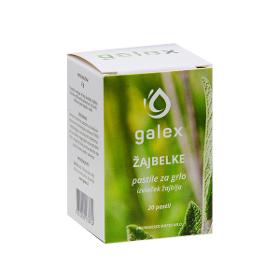
GALEX D.O.O.
Slovenia
Sage pastilles with sweetener contain sage extract, which has a beneficial effect on the airways as it protects the mucous membranes of the oral cavity and throat.
Request for a quote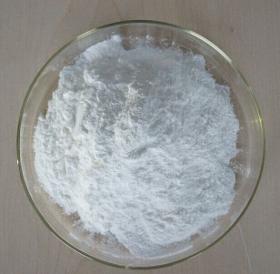
LIA MOOS
Netherlands
We are offering food grade product made by crystallizing a purified and filtered syrup removed from sugar beets or sugar cane, which is then dried and screened to produce the most popular sugar grades. It is white in color and has sucrose content of 99.85 percent. This product may be referred to as Fine Granulated Sugar or Extra Fine Granulated Sugar, depending on market location. OFFER ALL KIND OF SWEETENERS AT AFFORDABLE PRICES .
Request for a quote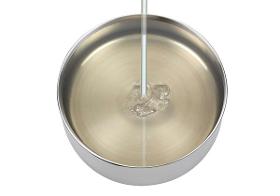
LIA MOOS
Netherlands
We are offering food grade product made by crystallizing a purified and filtered syrup removed from sugar beets or sugar cane, which is then dried and screened to produce the most popular sugar grades. It is white in color and has sucrose content of 99.85 percent. This product may be referred to as Fine Granulated Sugar or Extra Fine Granulated Sugar, depending on market location. OFFER ALL KIND OF SWEETENERS AT AFFORDABLE PRICES .
Request for a quote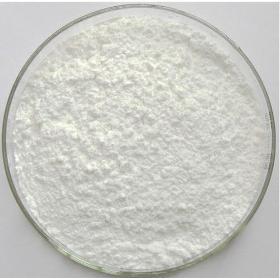
LIA MOOS
Netherlands
We are offering food grade product made by crystallizing a purified and filtered syrup removed from sugar beets or sugar cane, which is then dried and screened to produce the most popular sugar grades. It is white in color and has sucrose content of 99.85 percent. This product may be referred to as Fine Granulated Sugar or Extra Fine Granulated Sugar, depending on market location. OFFER ALL KIND OF SWEETENERS AT AFFORDABLE PRICES .
Request for a quote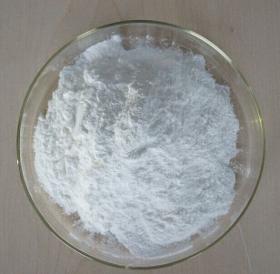
LIA MOOS
Netherlands
We are offering food grade product made by crystallizing a purified and filtered syrup removed from sugar beets or sugar cane, which is then dried and screened to produce the most popular sugar grades. It is white in color and has sucrose content of 99.85 percent. This product may be referred to as Fine Granulated Sugar or Extra Fine Granulated Sugar, depending on market location. OFFER ALL KIND OF SWEETENERS AT AFFORDABLE PRICES .
Request for a quote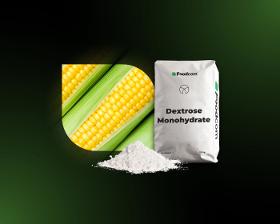
FOODCOM S.A.
Poland
Dextrose Monohydrate, also known as d-glucose, is a type of simple sugar usually produced by the hydrolysis of starch using acid or enzymes. It is used in food production to enhance flavor and aroma and in fermentation. In the meat industry, it assists in the diffusion of salt and nitrate in processed meat. Shelf life of Dextrose Monohydrate is 24 months and it must be stored in a dry, cool and well ventilated warehouse. Foodcom S.A. offers this raw material in 25 kg bags. Dextrose monohydrate is widely used as a sweetener and the main ingredient of corn syrup in food production. It is also found in confectionery products such as jams, marmalades, jellies, ice cream, cookies and other baked goods. In sports nutrition, it is used in shake powders and beverages to help build weight and muscle quickly. It is also an essential ingredient in drugs such as intravenous solutions, dialysis medications, tablets and gels used in medical facilities and pharmacies.
Request for a quote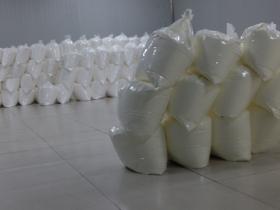
INKA SWEET KFT.
Hungary
It is a functional sweetener based on Stevia, prebiotic inulin fiber and isomaltulose; beneficial to health, 100% natural. It can be used in all meals and beverages. It has the same taste as sugar. Palatinose (isomaltulose) is a slow-absorbing carbohydrate with a very low glycemic index that does not raise blood sugar levels on its own, but is also an effective source of energy for the body. It can be used by diabetics, dieters, athletes too. Sweetness: It is 5 times sweeter than sugar cane, so a fifth of it is needed to achieve the same degree of sweetness of sugar.
Request for a quote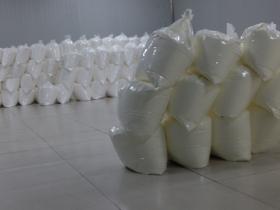
INKA SWEET KFT.
Hungary
It is a functional sweetener based on Stevia, prebiotic inulin fiber; beneficial to health, 100% natural. It can be used in industrial product manufacturing, suitable for the complete replacement of sugar. It has the same taste as sugar, without aftertaste. Sweetness: It is 350-400 times sweeter than sugar cane. Recommend it to: For the production of liquid food products (soft drinks, flavored beers, yoghurts, jams, sauces, etc.), for sweetening instant powders, food supplements.
Request for a quote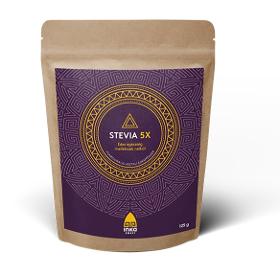
INKA SWEET KFT.
Hungary
Inka Sweet Stevia Is availbale in retail packaging: 125gr in a doypack package. Inka Sweet Stevia should not be confused with "regular" stevia drops, powders or tablets. It is different from other sweeteners available. Taste: 5 times sweeter than sugar. Similar to sugar in terms of taste, it enhances the flavour of food, without side flavours Composition: 100% natural ingredients Effects: not only does it sweeten, nourish, cleanse and promote optimal functioning of your body, it also does not interfere with digestive processes, no unpleasant side effects. Target audience: anyone (including children, pregnant mothers and diabetics) Diabetics, insulin resistant, Calories: 80% fewer calories and carbohydrates than sugar. Texture: odourless, white in colour, fine powder.
Request for a quote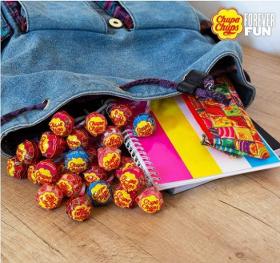
HOL DING HOLDING B.V.
Netherlands
Chupa Chups Lollipop all range available in wholesale
Request for a quoteResults for
Sweeteners - Import exportNumber of results
95 ProductsCountries
Category
- Sugar (34)
- Dietary and organic foods (15)
- Organic food (15)
- Bakery and confectionery industry - machinery and equipment (5)
- Foods, health (5)
- Cocoa and chocolate (3)
- Dried fruits (2)
- Egg products (2)
- Powdered and condensed milk (2)
- SWEETS (2)
- Additives, food (1)
- Chemicals - import-export (1)
- Chestnuts and sweet chestnuts (1)
- Extracts, food (1)
- Food - import-export (1)
- Food Processing (1)
- Food flavourings (1)
- Fruit (1)
- Herbs for medicines and cosmetics (1)
- Soft drinks (1)